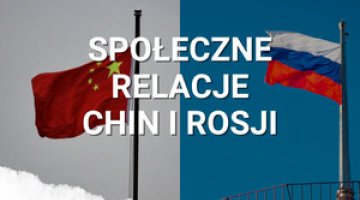By armour and by fear: the Russian army on the western flank

On 31 May, the head of the Russian Federation’s Ministry of Defence, General Sergei Shoigu, speaking at the ministry’s college, announced that by the end of this year around 20 large tactical formations and military units will be created in the Western Military District (MD). This was presented as Russia’s response to NATO’s activity. The minister said: “The actions of our Western colleagues are destroying the global security system, and have forced us to take appropriate countermeasures”. The speech was presented in the Russian media in a way that suggested that the above-mentioned 20 tactical formations (division and brigade levels) and military units (from regiment level downwards) are new structures, formed from scratch in 2021. Russian commentators have focused on the theme of the allegedly growing military threat posed by the North Atlantic Alliance.
Commentary
- The Russian Federation’s Armed Forces began the intensive expansion of the grouping in the western strategic direction in 2015, after the aggression against Ukraine and the growing resistance of Western states to Russian military policy on the territory of the former Soviet Union. The creation of the 20 large tactical formations and military units which Shoigu mentioned represents a direct continuation of the activities carried out since the middle of the previous decade and – as announced – are planned to continue in the coming years. The core of the grouping is the forces of the Western MD, which is currently the strongest operational and strategic level structure in the Russian army. The strengthening of the western direction has also been subjected to the expansion of the Southern MD (which had previously been concentrated mainly in the Caucasus) and the separation (as an independent structure) and expansion of the Northern MD (based on the Northern Fleet and units of other types of armed forces deployed in the Arctic region). The nature of these changes indicates that the Russian Federation has real concerns about a conflict in the European theatre of hostilities, including a direct military clash with NATO countries.
- The importance of the western direction is evidenced by the fact that 9 of the 11 combined arms divisions (armoured and mechanised) of the Russian Land Forces have been concentrated there, three of which are currently being created. It is worth noting that the process of redeveloping the division structures in the Russian army has been underway since 2013: two divisions had been established by the time of the attack on Ukraine, and the creation of the remainder began after 2014. In total, the offensive potential of the Russian Army’s Land Forces in the western strategic direction was increased by over 50% in the period from 2015 to 2020, and its expansion is continuing. The process of expansion – to the west alone – also includes the Aerospace Forces, in which two new divisions have been created: aviation and missile air defence.
- Starting from 2015, about 20 new military units of various levels have been created annually in the Western MD, as the Ministry of Defence’s command periodically reports – depending on the political demands of the moment (according to the first such collective report, from the beginning of 2016 to mid-2018, 70 such units have been formed). It should be emphasised that the creation of each unit in any given year means the de facto completion of such a process. While small sub-units (from battalion level on down) can actually be formed from scratch within one year, the creation of full units (regiments) and tactical formations takes longer: in the case of combined arms divisions, the process can take from three to five years. The scale of this expansion is comprehensive, covering all types of troops and services; its aim is to assemble the existing and newly-created operational groups (armies and corps) and tactical formations (divisions). In the case of the latter, this results from the decision taken no later than 2016 to create combined arms divisions in the full-time wartime structure, i.e. with four well-developed combined arms regiments (in peacetime, there are three such regiments in the division’s full-time regiment: two armoured and one mechanised, or vice versa). The newly-created combined arms divisions will immediately adopt a four-regiment structure, while additional regiments will be systematically created within those created in the three-regiment structure. Similarly, the divisions of the Airborne Forces, which are lighter than the combined arms formations, will move from the two-regiment to the three-regiment structure.
- The combination in one group of tactical formations and military units in Minister Shoigu’s speech suggests that several tactical formations will be created in the Western MD in 2021, most often of the kind associated with the newly-created combined arms divisions. However, this should be treated as just a propaganda exercise, intended to create the impression that the scale of the Russian Armed Forces’ expansion westwards is greater than that already observed. Meanwhile, the creation of one new combined arms division in the Western Military District is to be completed this year: the 18th Mechanised Division (MechDiv) as part of the 11th Army Corps (AC) in the Kaliningrad oblast (the 275th and 280th mechanised regiments and a divisional artillery regiment are being created). The creation of the structures of the 132nd Mixed Aviation Division on the exclave’s territory is also coming to an end (the helicopter regiment should become operational by the end of this year).
- How much progress has been made in strengthening the already existing tactical formations remains a separate issue. By the end of 2021, the 76th Air Assault Division will achieve operational readiness; this unit has been developed as a war-time structure (it was the first of the Airborne Forces to receive a third full-time regiment, the 237th Air Assault Regiment). Most likely, the creation of the fourth regiments in the elite 2nd Guards Tamanskaya Motor Rifle Division and the 4th Guards Kantemirovskaya Tank Division in the 1st Guards Tank Army will be completed this year, as evidenced by the supply of new weapons (mainly tanks and infantry fighting vehicles). Similar activities are also being carried out in what at present are the three-regiment tactical formations of the 20th Combined Arms Army (CAA), the 3rd MechDiv and the 144th MechDiv. The 20th CAA and the 11th AC’s support and logistics units should also be completed this year. Regarding the newly-created units, special attention should be paid to the 81st Transport Aviation Regiment in Ivanovo, thanks to which each of the three divisions of the Western MD’s Airborne Forces will have its own air transport (in the instance mentioned above, this will be secured by the 98th Airborne Division).
- Ukraine and the countries of NATO’s eastern flank which are directly exposed to Russian military aggression should be considered as the external addressees of Minister Shoigu’s statements. The link with the meeting between the leaders of the Russian Federation and the United States (scheduled for 16 June in Geneva) is important only in the context of the US’s military involvement in Europe. The military aspect of the relationship between Moscow and Washington is primarily shaped by reports emphasising the development of Russian strategic arms and new categories of weapons (in recent times, mainly hypersonic missiles), and the message on this subject is being formulated not by Minister Shoigu, but directly – in his own speeches – by President Vladimir Putin.




